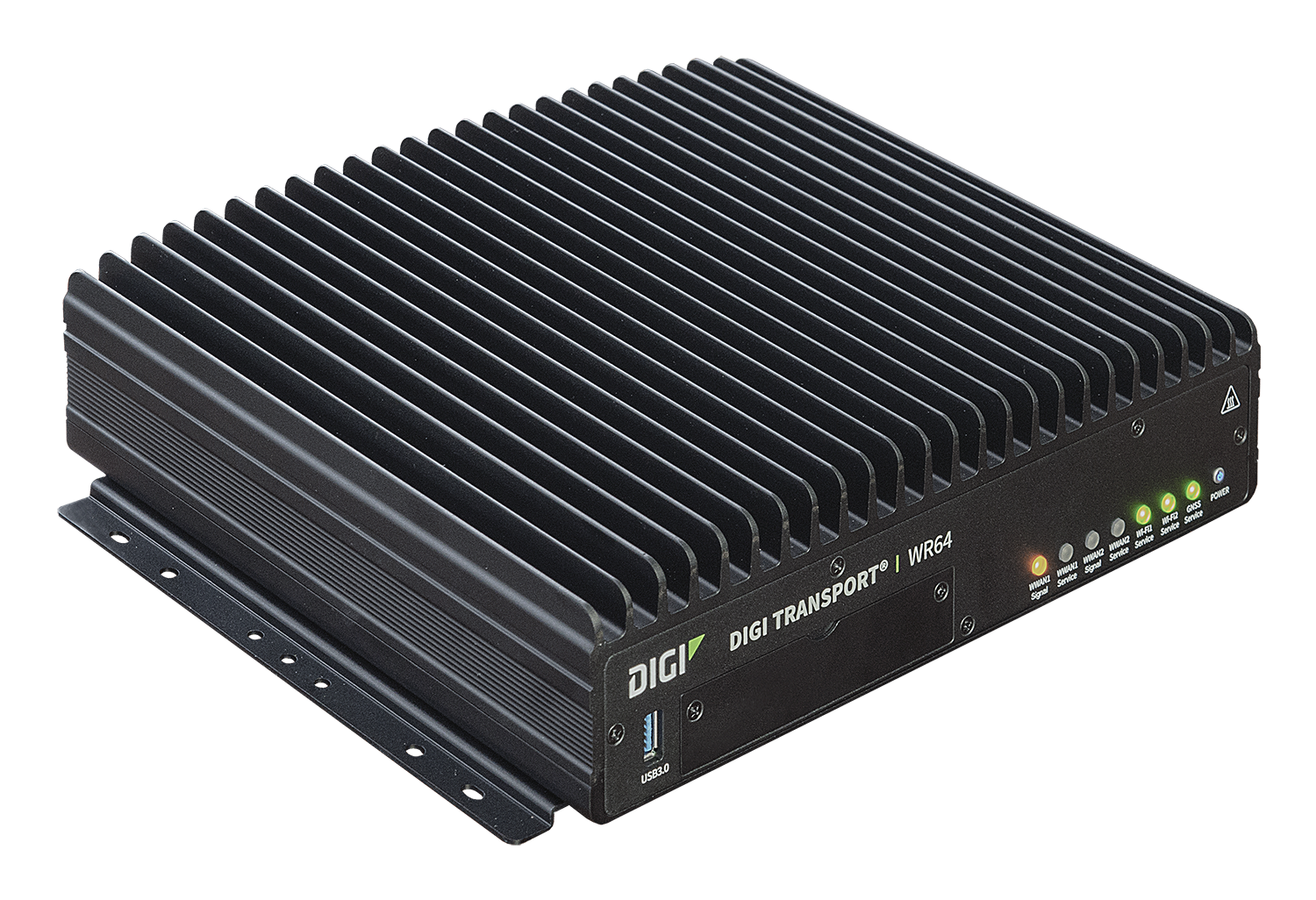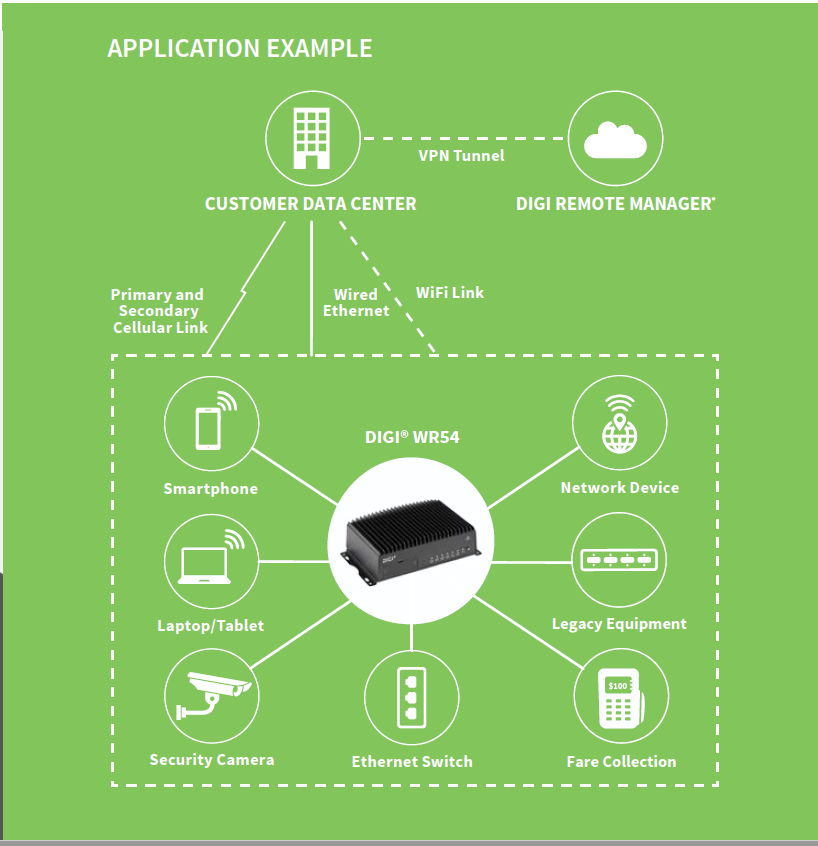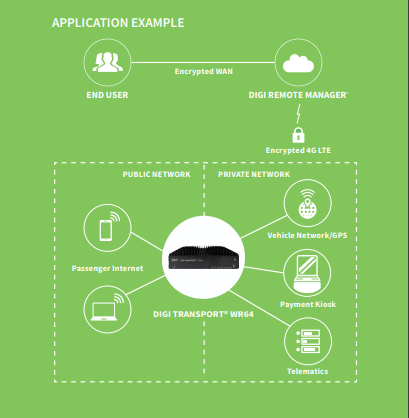City residents expect their transit systems to run on schedule. To make that happen, regional transportation officials need to be able to dynamically redirect capacity where needed during rush hour, special events and unforeseen incidents. Transit agencies are also expected to immediately activate emergency response procedures following a disaster.
All this requires a communication network that is fail-safe, interoperable and highly secure. Most would agree that today’s networks are not completely adequate, and that further improvement is required to achieve more effective communications.
In this post, we will cover IoT solutions available for the broad-spectrum needs of the transit sector, including railroad companies, city transit systems and emergency responders. We will review specific connectivity solutions that support the requirements of these organizations, from secure IoT devices to cloud-based management platforms and professional services to help guide IoT implementations.
PTC Automatically Controls Trains to Prevent Collisions, Derailments or Switching Errors
Some, but not all, railroads have met the Positive Train Control (PTC) deployment deadlines, which continue to be extended. The challenges most often cited include system complexity, capital investment and spectrum allocation. The communications network adds to the complexity, due to the need to integrate a fiber backbone with cellular and 220 MHz, and to deal with 220 MHz interoperability issues. The communications network is considered a safety-critical PTC system component, so if it is in a failed state the train can proceed at reduced speed only if other signaling systems are operating.
To help expedite PTC compliance, Digi offers a complete communications connectivity solution that includes the Digi TX64 5G Rail router, purpose-built for the rail industry and designed to be mounted on board locomotives and rail cars. It meets all rail-certification requirements for AREMA C and H, EN50155 and AAR S-5702. Communications interfaces include hardened connectors, specifically M12 for Ethernet and serial, as well as TNC connectors for antennas. Digi routers offer drop-in deployment with simple, secure remote control.

PTC message routing and wireless communications use a Mobile Communications Package (MCP) featuring an integrated assembly that houses the Digi TX64 5G rail router, power supply and RF filters. Functioning as the integral communications hub in locomotives and rail cars, Digi TX64 relays data messages to and from waysides, and enables system maintenance, configuration and network management over a cellular link.
Another key component to help maintain both device and network health is supplied by Digi Remote Manager®. It gives you a single, secure platform to access data and manage IoT devices from anywhere. Digi Remote Manager also enables effective and efficient control to keep PTC deployments on track – edit configurations, update firmware, and monitor, schedule and automate tasks – all from a central location.
Today, transit agencies can leverage both existing LTE, LTE-Advanced and evolving 5G international standards for mission critical applications and services over commercial cellular networks. The services can be built on protocols and mechanisms that guarantee priority and preemption for voice, video and data, to meet the needs of the new First Responder Network Authority (FirstNet) and enable better device interoperability across different agencies.
Protecting Citizens and Critical Infrastructure
With this new and evolving technology, first responder vehicles, traffic and transit systems will be able to utilize specialized on-board cellular mobile access routers as network gateways that securely bridge local subnets to agency systems. Agencies seeking to deploy these routers will need to understand how to evaluate them for reliability, ruggedness and security along with ensuring forward compatibility as new public safety applications emerge. Note that Digi Professional Services can provide assistance with implementation, installation and other needs.
Mission critical services are being deployed in stages. Fortunately, the structural network technology used for priority voice, video and data is currently in place. Bandwidth on shared or reserved spectrum can be allocated for priority access using dedicated bearers with associated quality-of-service levels. Transit agencies that deploy equipment compatible with these structural capabilities can take advantage of the priority data services available today, and then efficiently layer future services such as group video calls with simple firmware upgrades.

Due to advances in network equipment and services, most buses have an on-board cellular router that functions as a communications gateway for the various systems. A bus has become a mobile data center of sorts. Central dispatchers can coordinate the bus fleet through transmission of location and voice communications. Voice communications are increasingly implemented using IP technologies, Voice over IP (VoIP) or Voice over LTE (VoLTE). As a result, these systems are mission critical and need to run over a fail-safe communications network. In the Digi whitepaper, Making the Connection in Transportation, read how transit operators can consolidate cellular connectivity for smart, safe, and more efficient operations.
As always, passenger safety and security are the chief concerns of all transit agencies. There are few on-board systems more important in this area than the mobile access router – the method of communication that links the entire chain of command. The recent standards developments are just now enabling deployment of mobile access routers having forward compatibility with the many new services envisioned for mission critical applications. Reliable communications for all on-board systems ensures a safe environment is maintained and that authorities are promptly notified of any incidents.
The new Digi TX64 transit router is designed for mission critical communications, with support for priority, pre-emption and failover to backup networks. This is critical for coordinated dispatch and reliable location tracking following an incident when cellular networks may be overloaded, in order to expedite the arrival of emergency response teams. Additionally, multiple transit applications can be combined on a single communication platform. GPS, vehicle tracking, on-board payment systems, ticket kiosks and more can be managed with one router. By consolidating vehicle connectivity, agencies can improve operational efficiency and effectiveness while helping extend the life of transit assets.
The New Standard for Dual Redundant Communications

Passengers today demand a faultless on-board Internet experience. And with so many transportation options available, transit organizations must provide seamless Wi-Fi to retain and grow their ridership. Meanwhile, agencies must also be able to integrate vehicle data from engines, logistics programs, fare collection, security cameras, even digital signage – all while maintaining the highest level of security and reliability with a suite of cybersecurity features: Digi TrustFence®, a data privacy and device security framework, IPsec VPNs and dual concurrent cellular links.
Digi TX64 meets these complex simultaneous needs with dual CAT 11 cellular modules and dual high-speed Wi-Fi radios so that transit agencies can securely segment private data from public data, and deliver an Internet experience that keeps riders coming back. Internet access for riders is managed separately without impacting on-board communications systems.
The Future of Transit Connectivity
 Digi designs and manufactures industrial-grade communications equipment used in transportation and transit systems around the world. The newest member of the family is Digi TX64, a mobile access router with the latest 5G cellular, WLAN and GPS technology. This high-performance router is designed to meet the complex requirements of the transit industry and other demanding applications that must meet strict operating standards, without disruption. While Digi TX54 is a compact general purpose router for transportation and public safety applications.
Digi designs and manufactures industrial-grade communications equipment used in transportation and transit systems around the world. The newest member of the family is Digi TX64, a mobile access router with the latest 5G cellular, WLAN and GPS technology. This high-performance router is designed to meet the complex requirements of the transit industry and other demanding applications that must meet strict operating standards, without disruption. While Digi TX54 is a compact general purpose router for transportation and public safety applications.

Digi cellular routers, servers, adapters and gateways support critical and emerging needs in rail, bus, traffic, emergency response, energy and smart cities. They enable connectivity to standards-based and proprietary equipment, assets, IoT devises and sensors – to ensure reliable communications over virtually every form of wireless or wired system. An integrated remote management platform helps speed deployments using highly efficient network operation for mission critical functions such as mass configuration and firmware updates, including system-wide monitoring with dashboards, alarms and performance metrics.
The future of transit belongs to agencies, operators and authorities that can leverage smart, secure and cost-efficient connectivity to improve the rider experience, lower costs and improve safety and performance. With cellular routers like Digi TX64 and Digi TX54, organizations can consolidate remote connectivity and simplify their infrastructures.
For more information, or assistance selecting the right cellular solutions for your application, contact us. A Digi expert can help you plan, procure and deploy your complete solution.